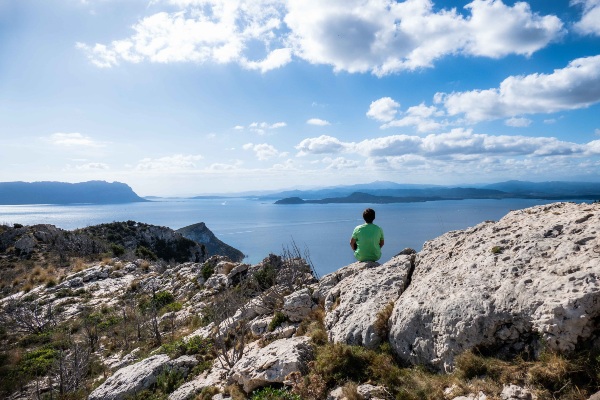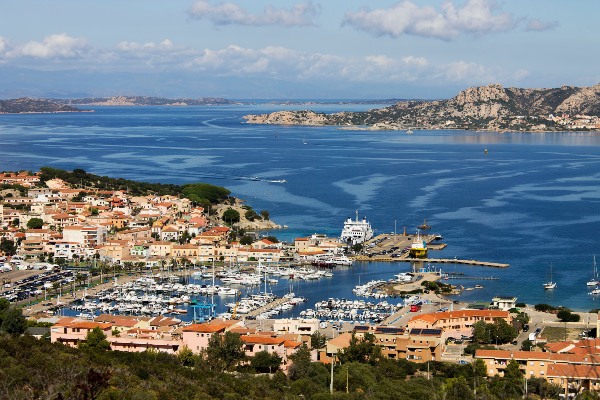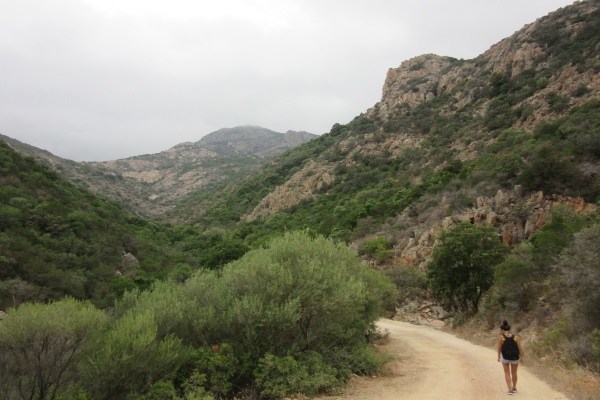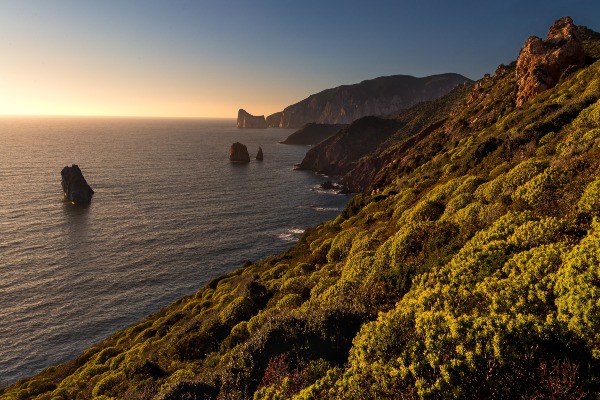Sardinia in January – Where to Go and What to Do
As the second largest island in the Mediterranean Sea, Sardinia has long beckoned curious travellers to discover its sandy coastlines and rugged landscapes. However, whilst many may envisage Sardinia’s beauty at the height of the summer season, with the sun beating down on the island’s pastel houses and crystal clear waters, they fail to realise that this Mediterranean gem has much to equally offer during the winter months.
Visiting Sardinia in January is an opportunity to uncover the island in a season that visitors would often not consider for their holidays, giving you the unique opportunity to discover what makes this destination so special at an unsuspecting time of year.
There’s much more to this pristine Italian island than its untouched coastlines and blissful weather, as it’s a destination brimming with history, culture, long-standing traditions and tasty cuisine, which is why you’re bound to enjoy its offerings undisturbed during a quieter month like January.
If you’re still not convinced, we’d encourage you to read on, as we highlight why you should visit Sardinia in January, with all that it has to offer during this winter month.
Weather
The most important detail for travellers to consider when visiting Sardinia in January is its climate. Sardinian weather is vastly different depending on your location on the island, with the climate along the coast being considerably less mild in comparison to its inland mountainous regions.
Sardinia temperatures in January are the same as in December, with temperatures ranging from an average of 5°C to 14°C. Whilst this may not reach the comfortable summer temperatures that many expect during a visit to beautiful island locations such as Sardinia, its prime Mediterranean location means temperatures are never particularly cold.
Rain is something that visitors should be prepared for during the month of January, although there won’t be as much as you may expect. On average, there are 6-7 days of rainfall throughout the month, with an average of 23 millimetres of rainfall overall, considerably less than many UK residents would experience at home during the same month.

How to Get There
Is it possible to travel to Sardinia by sea or by air. Where you’re starting your journey from and how long you want to travel for may influence which transport method you prefer:
By Plane
The most convenient way of reaching Sardinia is by plane. The island is home to three airports – Alghero, on the northwest of the island, Cagliari, which is the island’s capital located in its southern region, and Olbia, which is in the northeast.
All airports remain within easy reach of some of Sardinia’s most popular city locations, with either a taxi journey or public transport being the best way to get you into its bustling centres.
If you’re flying from another Italian destination, most major cities on the mainland of Italy fly directly to Sardinia, including Rome, Pisa, and Venice to name but a few.
Other major European cities fly to Sardinia directly also, including the UK, France, and Spain. You may, however, find that flights cease entirely during the winter months, or that there are far fewer, given that the high season for tourists getting to Sardinia is in the summer.
By Boat
Ferries are a popular method for visiting Sardinia, and whilst it may not be as quick or convenient as a flight to the island, you can enjoy tranquil panoramas of the Mediterranean whilst onboard and unrivalled views of the island on your approach to its shoreline.
The ferry also offers the convenience of being able to bring your car with you whilst travelling.
Ferries are available from different destinations in mainland Italy, the neighbouring island of Sicily, and other surrounding countries including Spain and France. Depending on the ferry you take, and where you’re departing from to reach Sardinia, you’ll arrive at a different ferry port.
Sardinia has five ferry ports spread across the island, the most popular of which being Olbia in the north, Arbatax in the east, and Cagliari in the south. Ferries most often run during the high season in summer, but are available year-round.

Festivals and Events
January is a wholesome start to the year for Sardinia, with a number of festivals and events on the agenda that its visitors can share in engaging with to deepen their understanding of the island’s long-standing culture and traditions. Below, we’ve picked our favourites in hopes of giving you some inspiration for things to do in Sardinia during your next visit in January:
-
San Sebastiano
The festival of Saint Sebastian is celebrated at the end of January, from the 18th until the 19th. The saint was a Christian from the early church who served as a guard for the Roman emperor Diocletian. He was ordered to be executed by arrows because he converted his comrade Roman soldiers to Christianity.
Left for dead, the saint was said to have been nursed by a widow, and after making a full recovery, gave himself to the Diocletian, which subsequently led to his demise as he was beaten to death. However, locals in the town of Cuglieri believe that he was actually burned to death. This gained him his nickname as the saint that was martyred twice.
Now, bonfires are lit during these dates in honour of the saint. The local basilica is also adorned with laurels decorated with local oranges.
-
Carnevale di Mamoiada
The Carnival of Mamoiada is an ancient folk festival that is one of the oldest in Sardinia’s history. It originated in the small town of Mamoiada in Sardinia’s mountainous inland and celebrates the island’s archaic traditions. The celebration occurs in January every year.
The symbols of the celebrations are the Mamuthones and the Issohadores, who dress in black masks, dark sheepskins, and bells, as well as red jackets, white masks, and light-coloured clothing, respectively.
The issohadores lead the mamuthones in a procession, differing in the way they both look and move, but harmonic in their performance in the ceremony. The mamuthones purpose is to wake up nature and repel evil, whilst the issohadores’ aim is to grab young women with laces, symbolising good luck and health, as well as local authority figures to wish them a bountiful year ahead.
The dance and parade last several hours, with locals dressing in traditional attire and sharing local sweets.
-
Cap d’Any a l’Alguer
Translating to ‘New Year’s in Alghero’, the New Year’s celebrations in the famed Sardinian city of Alghero is one of the most important, and highly anticipated, events of the year.
Alghero is a historic city on the northwest coast of Sardinia. Protected by its ancient walls, its beautiful cobbled streets and bustling promenade erupt during the city’s New Year celebrations. Commencing the night of the 31st of December, the celebrations do not stop when the clock strikes 12, with many bars and eateries open until the sun rises for a full night of celebrations!
You’ll find the locals celebrating the dawn of a new year by writing a list of good intentions whilst looking out to sea, dancing the night away, or attending fantastic concerts in the Old Town’s piazzas with friends and family. Stick around for the amazing firework display set over the harbour to get your new year off to the perfect start.

Things to See and Do
There are plenty of options for things to do in Sardinia during January that can make the most of the winter season. We’ve suggested some of our favourites that best showcase the island’s natural beauty and varied history:
-
Ski On Sardinia’s Second Highest Peak
The ski season in Sardinia extends from December until March, with the milder inland temperatures creating the prime conditions for snow in the winter months, making the island an unsuspecting ski destination for winter sports lovers.
The ski area in Sardinia is found across the regions of Desulo, Fonni, and Villagrande Strisaili, with the main ski slope located on Bruncu Spina – Sardinia’s second highest mountain with 3.3km of slopes.
Likened to the Scottish highlands in appearance, the Gennargentu Mountain Range, where Brunca Spina is located, is in the centre of the island and visitors can enjoy the use of its ski lifts and fantastic downhill skiing and snowboarding opportunities on their next visit to Sardinia in January.
-
Visit Tomba Dei Giganti
Away from the high season of summer, guaranteeing significantly fewer tourists, visiting Sardinia in January offers a prime opportunity to visit any one of the island’s mesmeric archaeological sites without having to tackle crowds of visitors for that photo-worthy view or to gaze in awe at its historic ruins.
Sardinia itself is home to a host of archaeological areas and ancient ruins dating back millennia, and some of its most fantastic, and unique, ones are the Tomba dei Giganti.
Literally translating to ‘Giant’s Graves’, these huge ancient tombstones are scattered across the island, with some 350 spread throughout, dating back to the Bronze Age and Nuragic civilisation. According to local folklore, the tombs were created for giants found in the mountains, but local archaeologists believe it is likely just to be a mass grave site.
Whilst there’s no way you’ll manage to visit 350 tombs during your next visit, one of the most iconic is that located in Coddu Vecchiu. Denoted for its huge size, this gallery grave with eleven granite stones assembled in a semicircle is a perfectly preserved spectacle worthy of a visit.
-
Hike Su Gorropu Canyon
Denoted as Sardinia’s most amazing gorge, Su Gorropu is characterised by limestone walls reaching up to 500m in height and stretching up to 1,500 metres in length. Currently one of the largest canyons in Europe, the natural marvel has, over thousands of years, developed its own microclimate, making it home to beautiful endemic and endangered species, such as the Aquilegia nuragica – a perennial flower species only found in Sardinia.
There are several hiking trails to indulge in the spectacular scenes of Su Gorrupo, ranging in difficulty and length. One of the easiest of which is a 6km ridge trail starting from a local car park near the gorge opposite Hotel Silana at the Genna’s Silana pass. The hike reaches the 888m high Punta Cucuttos, offering some of the best views of Sardinia and takes roughly 1.5 hours.
Ensure you bring suitable footwear and hiking gear if you’re tackling this feat in Sardinia during January.

Other Tips
-
What To Wear In Sardinia in January
Due to the milder temperatures in Sardinia throughout winter, we would advise that you pack accordingly for this climate. Bring layers, a warm jacket, and items such as scarves, gloves, and hats, which will ensure that you are dressed appropriately for the colder weather at this time of year. As winter also brings more rainfall, packing a waterproof jacket, or umbrella, is also highly advised.
-
How Long To Stay in Sardinia in January
It is possible to explore Sardinia in as little as a week to gain an insight into its culture, traditions, thriving cities, and tranquil coastal settings. For those who truly want to explore the ins and outs of the island, however, giving yourself two weeks to explore the island will ensure that you can explore some of its lesser-visited areas and routes to have as authentic an experience as possible during your stay.
-
Best Ways To Get Around Sardinia in January
Whilst Sardinia does have good public transport links connecting its main regions, towns, and cities, visitors who are stretched for time may benefit from hiring a car for the duration of their stay to waste no time when exploring the region. Driving from the north to south of the island takes roughly 4 hours, whilst the east to west takes around 2.5 hours, so all locations are easily accessible during your stay.

Summary
Sardinia in January is a blissful time to visit the island away from the crowds of the summer season, leaving you ample opportunity to explore its sights and scenes undisturbed. Whilst the climate may be completely different to the warm, summer weather that many would envisage as the ‘perfect’ time to visit Sardinia to be, January is a fantastic time to behold the wealth of fantastic sights, events, and natural wonders in Sardinia that won’t disappoint travellers visiting at this time of year.
For further information on holidays in this beautiful part of the country, explore the rest of the Italian Breaks website or get in touch with our team to find out more.


